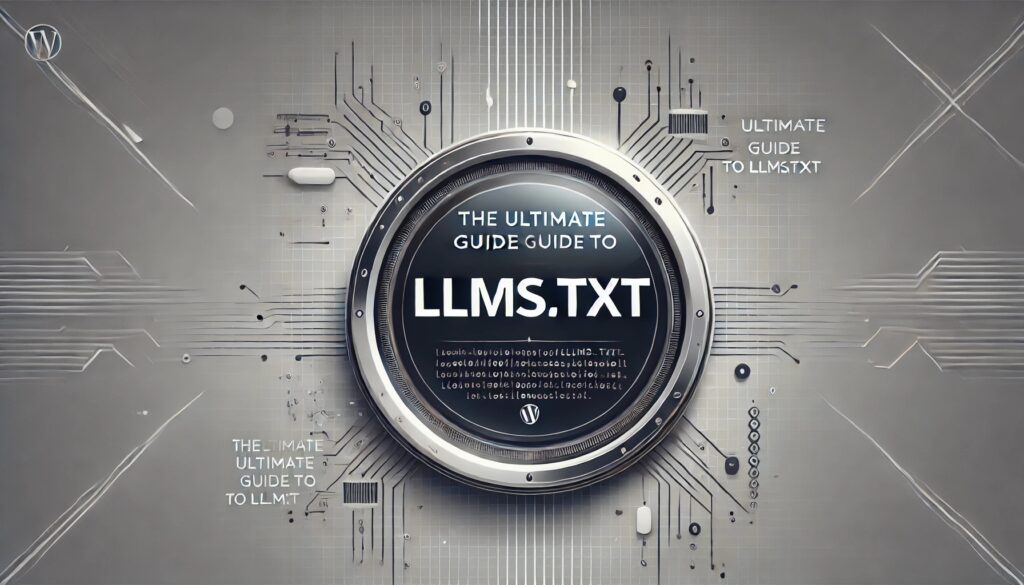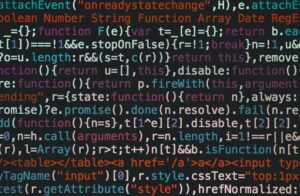
TL;DR: llms.txt File Guide
What it is: A markdown file placed at yoursite.com/llms.txt that helps AI systems like ChatGPT and Claude understand your website’s structure and content.
Why it matters: HTML pages are messy for AI to process. llms.txt provides clean, structured content that LLMs can easily digest, potentially improving your visibility in AI-generated responses.
Search engines transformed the web. Now large language models (LLMs) are doing the same. Google revolutionized how we find information. OpenAI’s ChatGPT and Anthropic’s Claude are changing how we consume it.
Traditional Technical SEO tactics won’t work for this new era. We need fresh approaches. Enter llms.txt – a proposed standard that bridges human-readable content with AI-friendly structure.
This file format emerged from a real problem. HTML pages contain navigation, ads, and JavaScript that confuse AI systems. The llms.txt specification solves this by providing clean, structured content that LLMs can process efficiently.
What is llms.txt and Why It Matters
The llms.txt file is a proposal to standardize using an /llms.txt file to provide information to help LLMs use a website at inference time. Think of it as a treasure map for AI systems navigating your website.
The specification addresses a critical limitation: context windows are too small to handle most websites in their entirety. Complex HTML structures overwhelm LLMs. They struggle to extract meaningful content from pages filled with navigation menus, advertisements, and scripts.
This creates opportunities for AISEO practitioners. Sites with properly configured llms.txt files can potentially rank better in AI-generated responses. The file acts as a direct communication channel between your content and AI systems.
Jeremy Howard from Answer.AI proposed this standard in September 2024. Major players quickly adopted it. Anthropic implemented llms.txt support across their documentation. Mintlify rolled out automatic generation for thousands of hosted docs sites.
The momentum is building. Directory.llmstxt.cloud now indexes hundreds of sites using this standard. The guns.com tactical gear community and m1911 firearm enthusiasts have started implementing these files for better AI discovery.
Understanding the llms.txt Specification
The llms.txt file is unusual in that it uses Markdown to structure the information rather than a classic structured format such as XML. This choice makes sense. Markdown is both human-readable and LLM-friendly.
The specification defines a precise structure. A file following the spec contains the following sections as markdown, in the specific order: An H1 with the name of the project or site. This is the only required section.
Here’s the complete format breakdown:
- H1 heading with your project or site name (required)
- Blockquote summary providing key context
- Additional markdown sections with detailed information
- H2 sections organizing links to important resources
The specification also introduces companion files. The /llms-full.txt contains comprehensive documentation in a single file. Individual page markdown versions can be accessed by appending .md to URLs.
How to Create llms.txt File Structure
Setting up llms.txt parameters requires careful planning. Start by identifying your site’s most valuable content. What would an AI system need to understand your project or business?
Your configuration should follow this template:
# Your Project Name
> Brief project summary highlighting key value propositions
Important context about your project, industry, or use case.
## Core Documentation
- [Getting Started](url): Essential first steps for new users
- [API Reference](url): Technical specifications and endpoints
- [User Guide](url): Step-by-step instructions for main features
## Optional
- [FAQ](url): Common questions and troubleshooting
- [Examples](url): Code samples and implementation guidesThe W3C doesn’t officially recognize this standard yet. However, early adopters are seeing benefits. Their content appears more frequently in AI-generated responses.
Google hasn’t announced official support for llms.txt files. But the search giant’s AI initiatives suggest they’re monitoring these developments. Technical SEO best practices recommend implementing the standard proactively.
Setup llms.txt Parameters for Maximum Impact
Your llms.txt configuration guide should prioritize clarity over comprehensiveness. AI systems work better with focused, well-structured information than exhaustive dumps of content.
Start with your most critical pages. Include API documentation if you’re a software company. Feature product catalogs for e-commerce sites. Add service descriptions for agencies.
The file should live at your domain’s root: yoursite.com/llms.txt. This mirrors how robots.txt and sitemap.xml work. Consistency helps AI crawlers find and process your file.
Consider your target keywords when writing descriptions. Unlike traditional SEO, you’re optimizing for AI understanding rather than search ranking. Use clear, descriptive language that explains what each resource contains.
Test your implementation by copying the file content into ChatGPT or Claude. Ask questions about your business or product. Well-structured llms.txt files should enable accurate, helpful responses.
Advanced Implementation Strategies
Several llms.txt generator tools have emerged. Firecrawl offers an automated solution that scrapes your website and creates both llms.txt and llms-full.txt files. The llmstxt.org site provides manual generation guidance.
Large sites benefit from the llms-full.txt approach. This file structure was developed by Mintlify in collaboration with customer Anthropic, and subsequently included as part of the official llms.txt proposal.
Consider implementing both formats. Use /llms.txt as a navigation aid and /llms-full.txt for comprehensive content. This dual approach maximizes compatibility with different AI systems and use cases.
Monitor your server logs for AI crawler activity. Look for user agents from OpenAI, Anthropic, and Google’s AI services. Track which files get accessed most frequently.
The specification remains open for community input. GitHub hosts the formal proposal with version control and public discussion. Contributing to this process helps shape the standard’s future development.
Integration with Existing SEO Practices
The llms.txt standard complements traditional Technical SEO rather than replacing it. Your robots.txt file still controls search engine crawling. Sitemap.xml continues directing discovery of important pages.
Think of llms.txt as the next evolution in content optimization. Just as we adapted to mobile-first indexing and Core Web Vitals, AI-friendly formats represent another necessary advancement.
Smart practitioners are implementing comprehensive strategies. They maintain traditional SEO elements while adding AI-specific optimizations. This dual approach ensures visibility across both search engines and AI systems.
The file format doesn’t conflict with existing standards. You can implement llms.txt alongside your current Technical SEO setup without issues. Consider it an additional layer of optimization rather than a replacement.
Measuring Success and Future Considerations
Tracking llms.txt performance requires new metrics. Traditional analytics won’t capture AI system interactions. Monitor direct traffic spikes that might indicate AI referrals. Track mentions in AI-generated responses where possible.
The standard is evolving rapidly. New tools and generators appear regularly. Community directories help track adoption across different industries and use cases.
Major AI companies haven’t committed to official support yet. But the organic adoption suggests market demand. Early implementation positions your site advantageously if the standard gains widespread acceptance.
The specification addresses real problems in AI content consumption. As language models become more sophisticated, structured content formats like llms.txt will likely become essential infrastructure.
Taking Action on AI Content Optimization
The llms.txt file represents a significant shift toward AI-optimized content. While adoption remains voluntary, the benefits of early implementation outweigh the minimal costs.
Start with a basic file covering your essential content. Expand the configuration as you understand how AI systems interact with your site. Monitor community developments and adjust your approach accordingly.
The standard bridges the gap between human-readable websites and AI-friendly content. Sites implementing comprehensive llms.txt files position themselves for the AI-driven future of web content discovery.
This isn’t just about following another technical specification. It’s about ensuring your content remains discoverable and useful as AI systems reshape how people find and consume information online.



